Abstract
In hemochromatosis and other disorders associated with iron overload, a significant fraction of the total iron in plasma circulates in the form of low molecular weight complexes not bound to transferrin. Efficient and unregulated clearance of this form of iron by the liver may account for the hepatic iron loading and toxicity that characterize these diseases. We tested this possibility by examining the hepatic removal process for representative iron complexes in the single-pass perfused rat liver. Hepatic uptake of both ferrous and ferric 55Fe from ultrafiltered human serum was found to be highly efficient and effectively irreversible (single-pass extraction of 1 microM iron, 58-75%). Similar high efficiencies were seen for iron complexed to specific physiologic and nonphysiologic coordinators, including histidine, citrate, fructose, oxalate and glutamate, and tricine. Because of lower plasma flow rates, single-pass extraction of these iron complexes in vivo should be even greater. Autoradiography confirmed that most iron had been removed by parenchymal cells. Hepatic removal from Krebs-tricine buffer was saturable with similar kinetic parameters for ferrous and ferric iron (apparent Km, 14-22 microM; V max, 24-38 nmol min-1 g liver-1). These findings suggest that high levels of non-transferrin-bound iron in plasma may be an important cause of hepatic iron loading in iron overload states.
Full text
PDF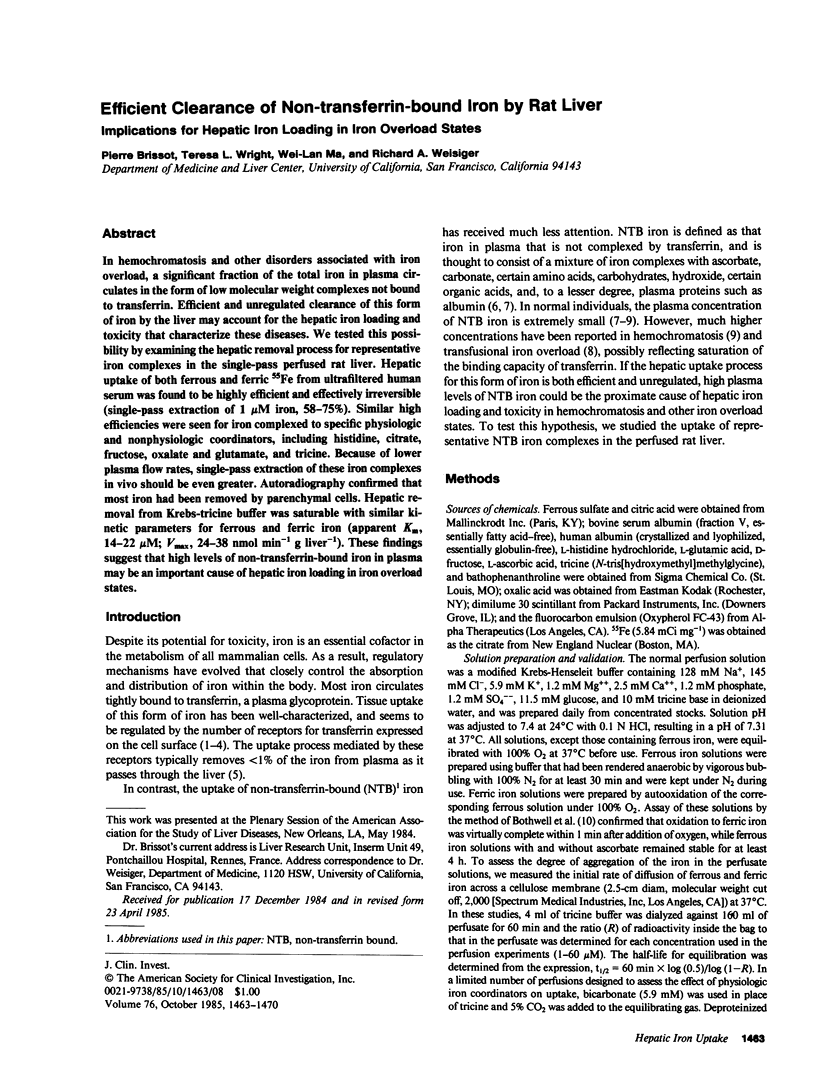
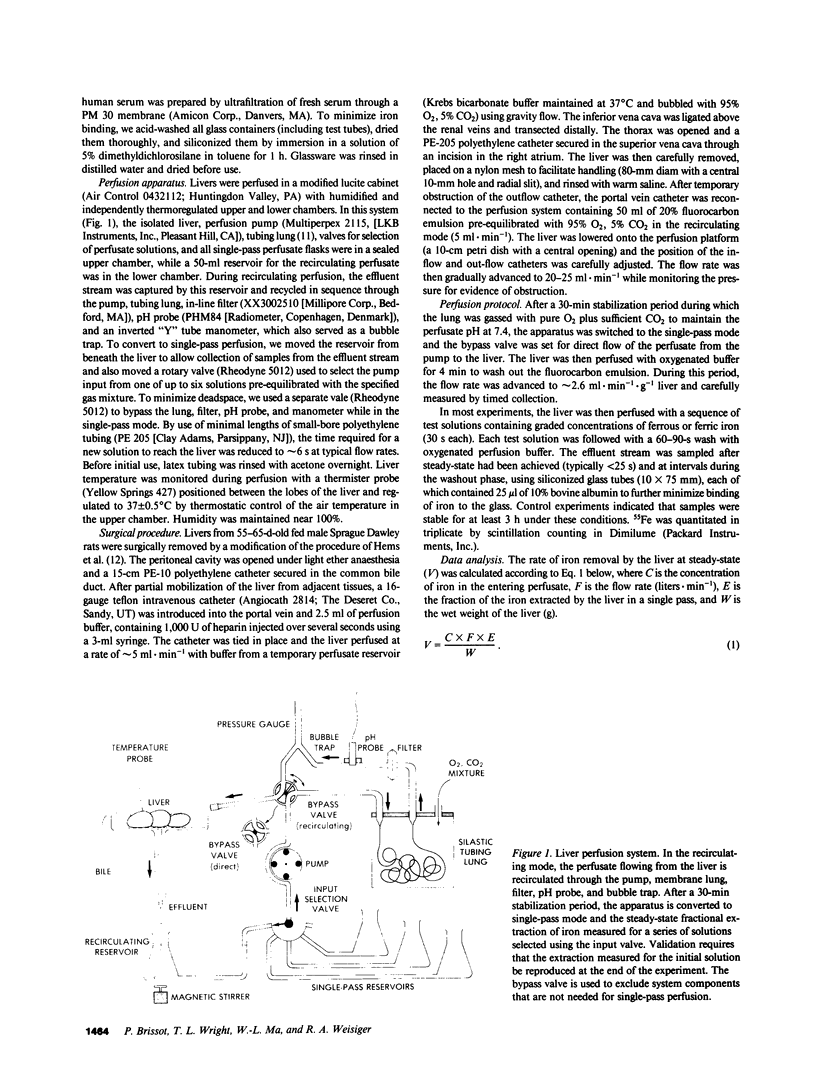
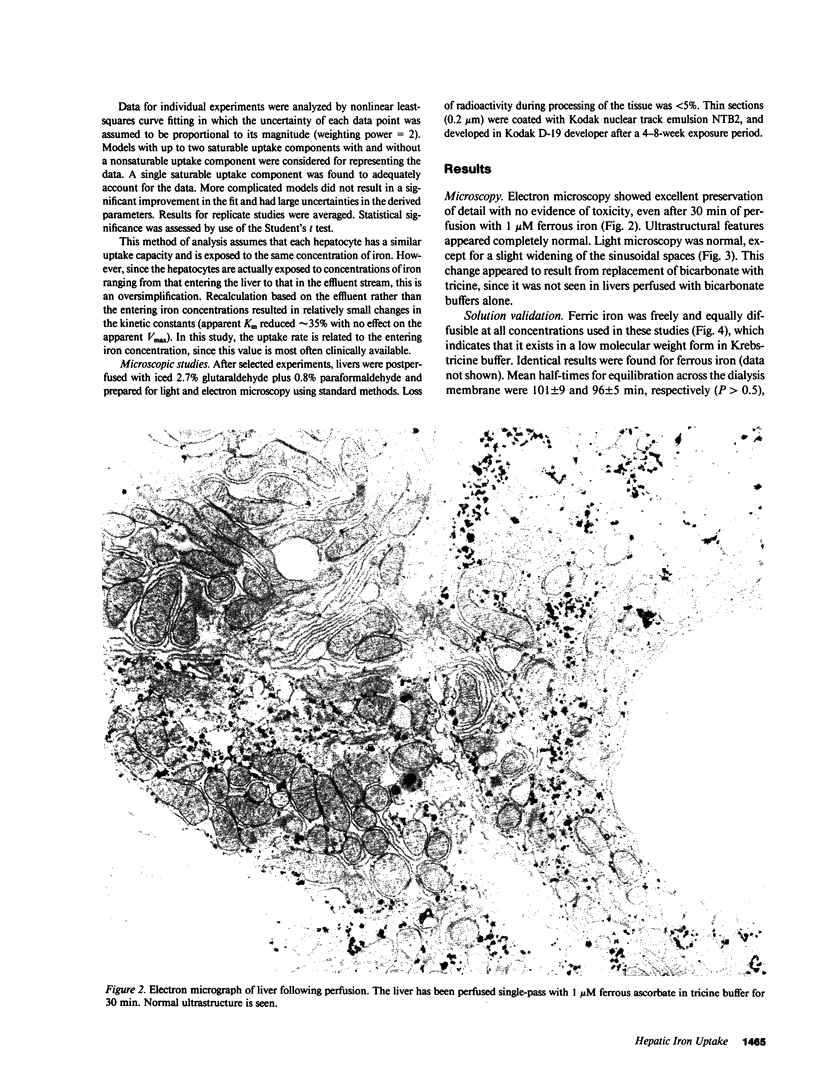
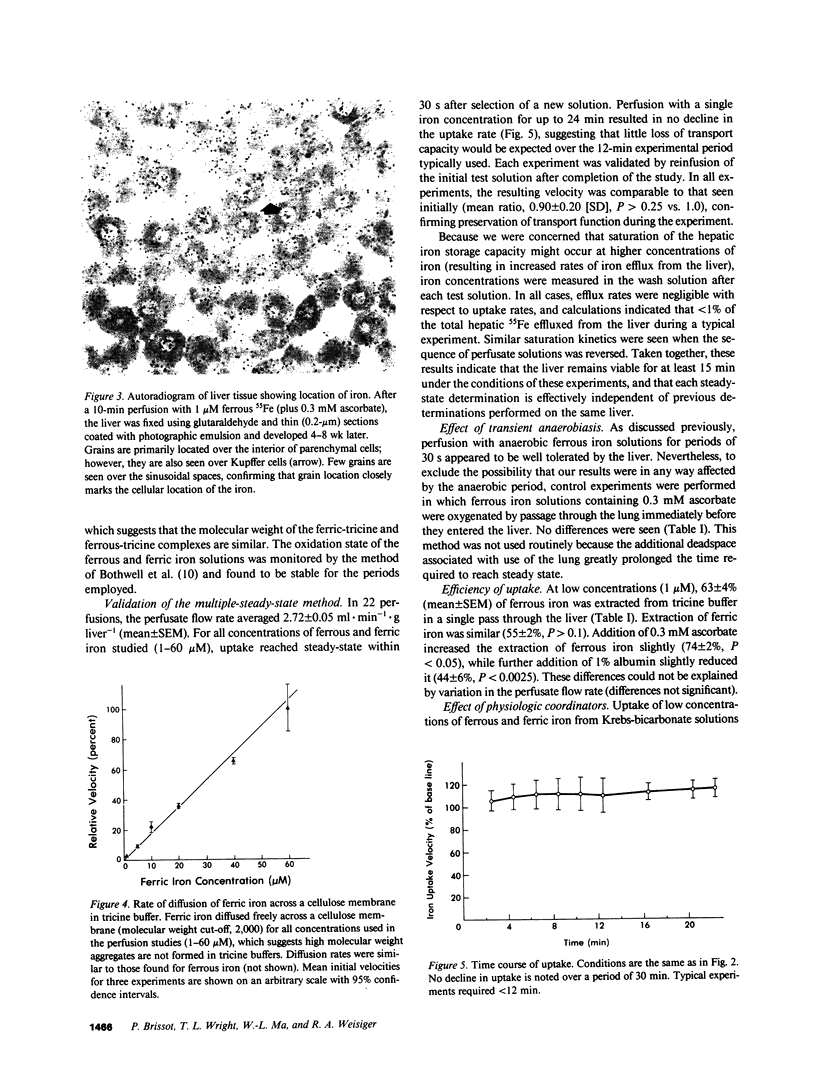
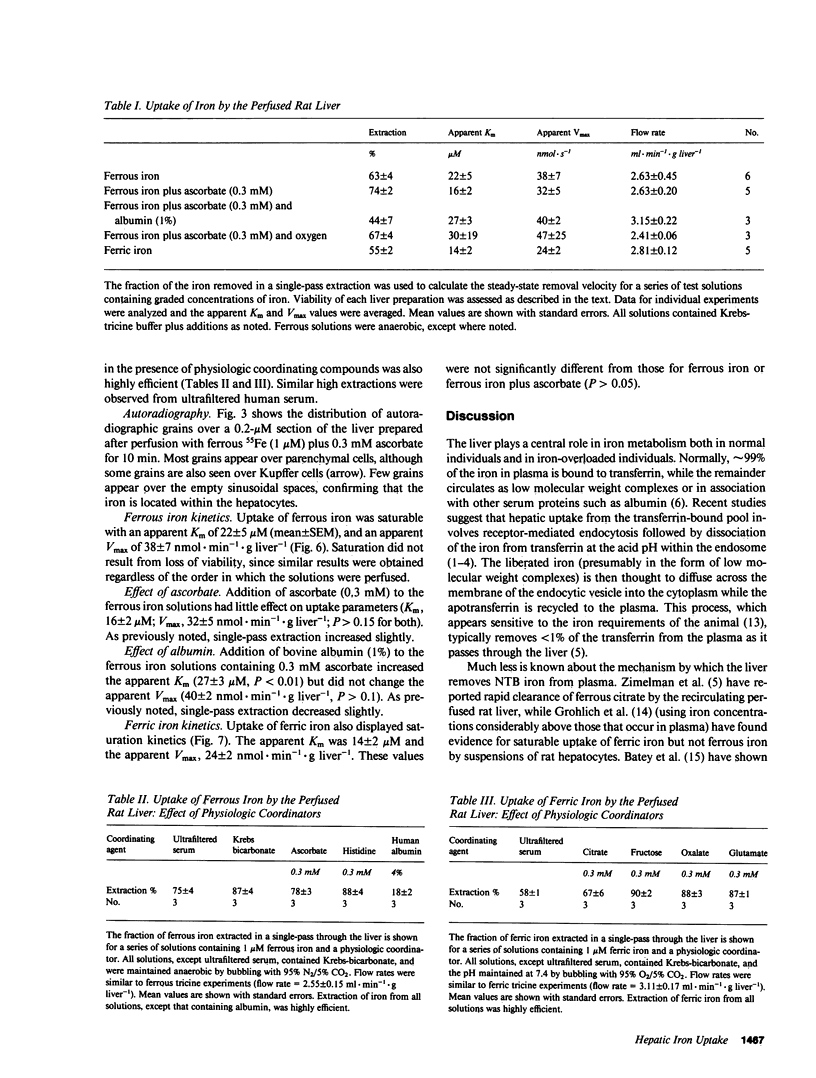
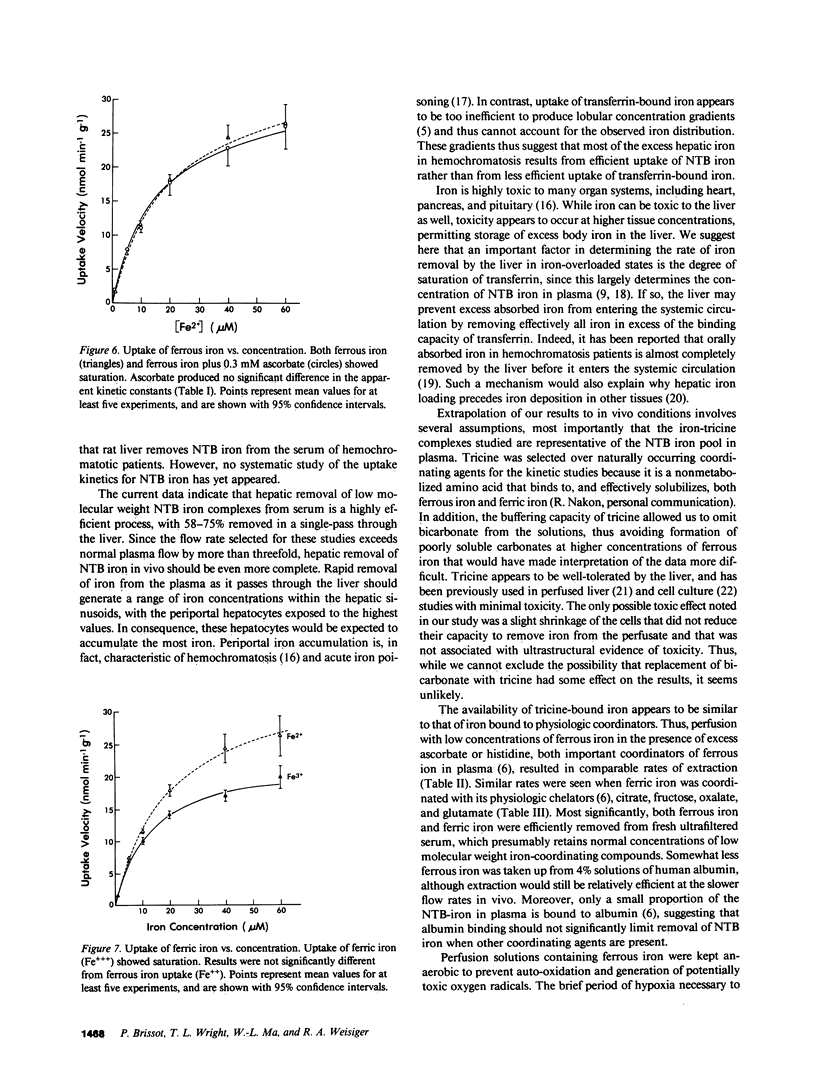
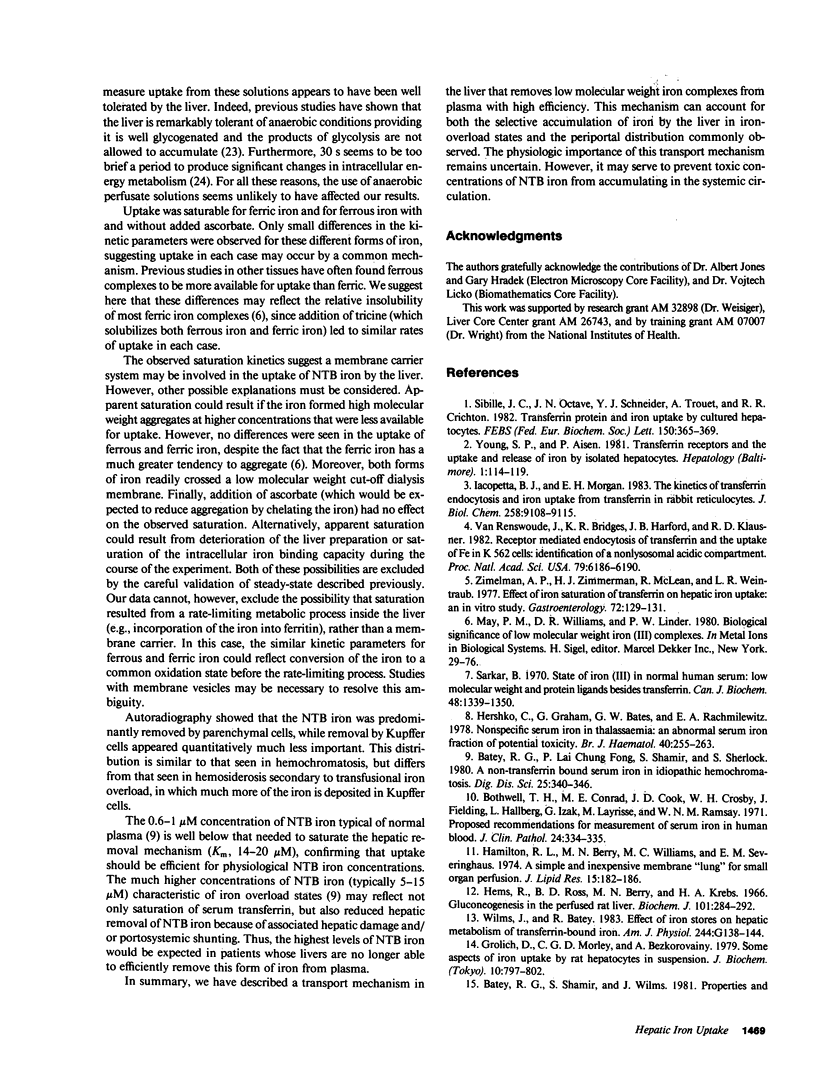
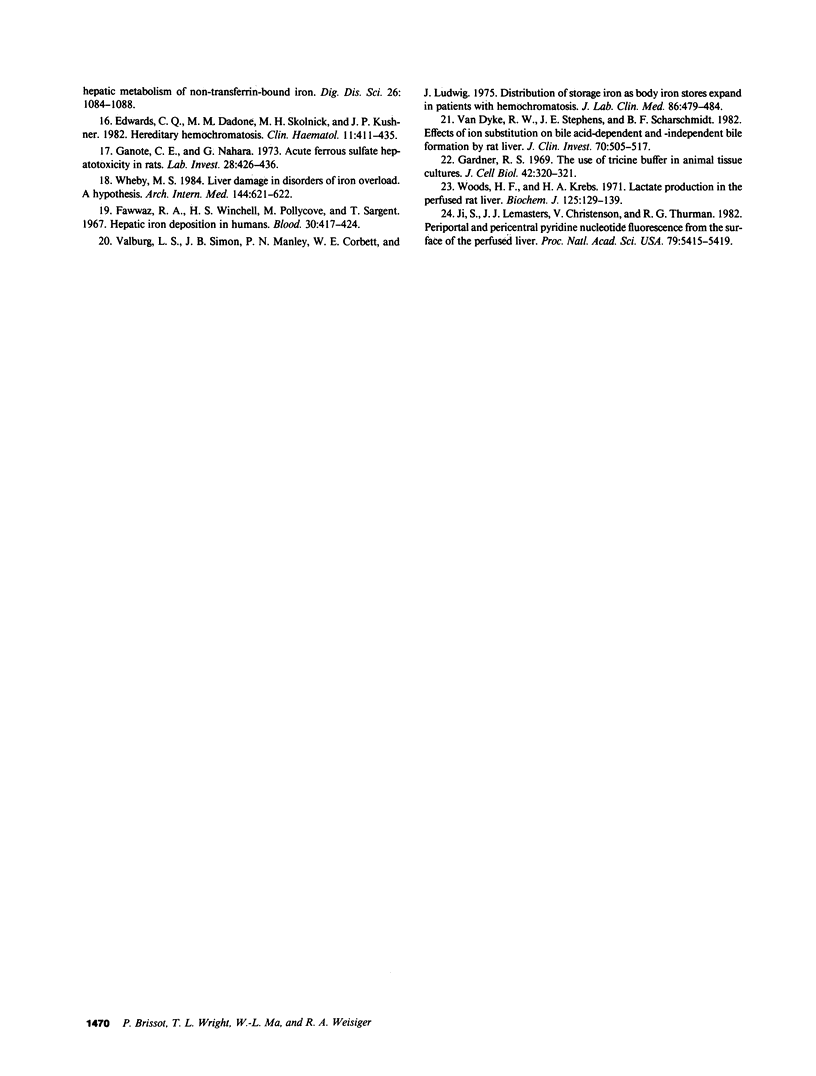
Images in this article
Selected References
These references are in PubMed. This may not be the complete list of references from this article.
- Batey R. G., Lai Chung Fong P., Shamir S., Sherlock S. A non-transferrin-bound serum iron in idiopathic hemochromatosis. Dig Dis Sci. 1980 May;25(5):340–346. doi: 10.1007/BF01308057. [DOI] [PubMed] [Google Scholar]
- Batey R. G., Shamir S., Wilms J. Properties and hepatic metabolism of non-transferrin-bound iron. Dig Dis Sci. 1981 Dec;26(12):1084–1088. doi: 10.1007/BF01295972. [DOI] [PubMed] [Google Scholar]
- Edwards C. Q., Dadone M. M., Skolnick M. H., Kushner J. P. Hereditary haemochromatosis. Clin Haematol. 1982 Jun;11(2):411–435. [PubMed] [Google Scholar]
- Fawwaz R. A., Winchell H. S., Pollycove M., Sargent T. Hepatic iron deposition in humans. I. First-pass hepatic deposition of intestinally absorbed iron in patients with low plasma latent iron-binding capacity. Blood. 1967 Oct;30(4):417–424. [PubMed] [Google Scholar]
- Ganote C. E., Nahara G. Acute ferrous sulfate hepatotoxicity in rats. An electron microscopic and biochemical study. Lab Invest. 1973 Apr;28(4):426–436. [PubMed] [Google Scholar]
- Gardner R. S. The use of tricine buffer in animal tissue cultures. J Cell Biol. 1969 Jul;42(1):320–321. doi: 10.1083/jcb.42.1.320. [DOI] [PMC free article] [PubMed] [Google Scholar]
- Grohlich D., Morley C. G., Bezkorovainy A. Some aspects of iron uptake by rat hepatocytes in suspension. Int J Biochem. 1979;10(10):797–802. doi: 10.1016/0020-711x(79)90051-x. [DOI] [PubMed] [Google Scholar]
- Hamilton R. L., Berry M. N., Williams M. C., Severinghaus E. M. A simple and inexpensive membrane "lung" for small organ perfusion. J Lipid Res. 1974 Mar;15(2):182–186. [PubMed] [Google Scholar]
- Hems R., Ross B. D., Berry M. N., Krebs H. A. Gluconeogenesis in the perfused rat liver. Biochem J. 1966 Nov;101(2):284–292. doi: 10.1042/bj1010284. [DOI] [PMC free article] [PubMed] [Google Scholar]
- Hershko C., Graham G., Bates G. W., Rachmilewitz E. A. Non-specific serum iron in thalassaemia: an abnormal serum iron fraction of potential toxicity. Br J Haematol. 1978 Oct;40(2):255–263. doi: 10.1111/j.1365-2141.1978.tb03662.x. [DOI] [PubMed] [Google Scholar]
- Iacopetta B. J., Morgan E. H. The kinetics of transferrin endocytosis and iron uptake from transferrin in rabbit reticulocytes. J Biol Chem. 1983 Aug 10;258(15):9108–9115. [PubMed] [Google Scholar]
- Ji S., Lemasters J. J., Christenson V., Thurman R. G. Periportal and pericentral pyridine nucleotide fluorescence from the surface of the perfused liver: evaluation of the hypothesis that chronic treatment with ethanol produces pericentral hypoxia. Proc Natl Acad Sci U S A. 1982 Sep;79(17):5415–5419. doi: 10.1073/pnas.79.17.5415. [DOI] [PMC free article] [PubMed] [Google Scholar]
- Proposed recommendations for measurement of serum iron in human blood. J Clin Pathol. 1971 May;24(4):334–335. doi: 10.1136/jcp.24.4.334. [DOI] [PMC free article] [PubMed] [Google Scholar]
- Sarkar B. State of iron(3) in normal human serum: low molecular weight and protein ligands besides transferrin. Can J Biochem. 1970 Dec;48(12):1339–1350. doi: 10.1139/o70-208. [DOI] [PubMed] [Google Scholar]
- Sibille J. C., Octave J. N., Schneider Y. J., Trouet A., Crichton R. R. Transferrin protein and iron uptake by cultured hepatocytes. FEBS Lett. 1982 Dec 27;150(2):365–369. doi: 10.1016/0014-5793(82)80769-2. [DOI] [PubMed] [Google Scholar]
- Valberg L. S., Simon J. B., Manley P. N., Corbett W. E., Ludwig J. Distribution of storage iron as body stores expand in patients with hemochromatosis. J Lab Clin Med. 1975 Sep;86(3):479–489. [PubMed] [Google Scholar]
- Van Dyke R. W., Stephens J. E., Scharschmidt B. F. Effects of ion substitution on bile acid-dependent and -independent bile formation by rat liver. J Clin Invest. 1982 Sep;70(3):505–517. doi: 10.1172/JCI110642. [DOI] [PMC free article] [PubMed] [Google Scholar]
- Wheby M. S. Liver damage in disorders of iron overload. A hypothesis. Arch Intern Med. 1984 Mar;144(3):621–622. [PubMed] [Google Scholar]
- Wilms J. W., Batey R. G. Effect of iron stores on hepatic metabolism of transferrin-bound iron. Am J Physiol. 1983 Feb;244(2):G138–G144. doi: 10.1152/ajpgi.1983.244.2.G138. [DOI] [PubMed] [Google Scholar]
- Woods H. F., Krebs H. A. Lactate production in the perfused rat liver. Biochem J. 1971 Nov;125(1):129–139. doi: 10.1042/bj1250129. [DOI] [PMC free article] [PubMed] [Google Scholar]
- Young S. P., Aisen P. Transferrin receptors and the uptake and release of iron by isolated hepatocytes. Hepatology. 1981 Mar-Apr;1(2):114–119. doi: 10.1002/hep.1840010205. [DOI] [PubMed] [Google Scholar]
- Zimelman A. P., Zimmerman H. J., McLean R., Weintraub L. R. Effect of iron saturation of transferrin on hepatic iron uptake: an in vitro study. Gastroenterology. 1977 Jan;72(1):129–131. [PubMed] [Google Scholar]
- van Renswoude J., Bridges K. R., Harford J. B., Klausner R. D. Receptor-mediated endocytosis of transferrin and the uptake of fe in K562 cells: identification of a nonlysosomal acidic compartment. Proc Natl Acad Sci U S A. 1982 Oct;79(20):6186–6190. doi: 10.1073/pnas.79.20.6186. [DOI] [PMC free article] [PubMed] [Google Scholar]





